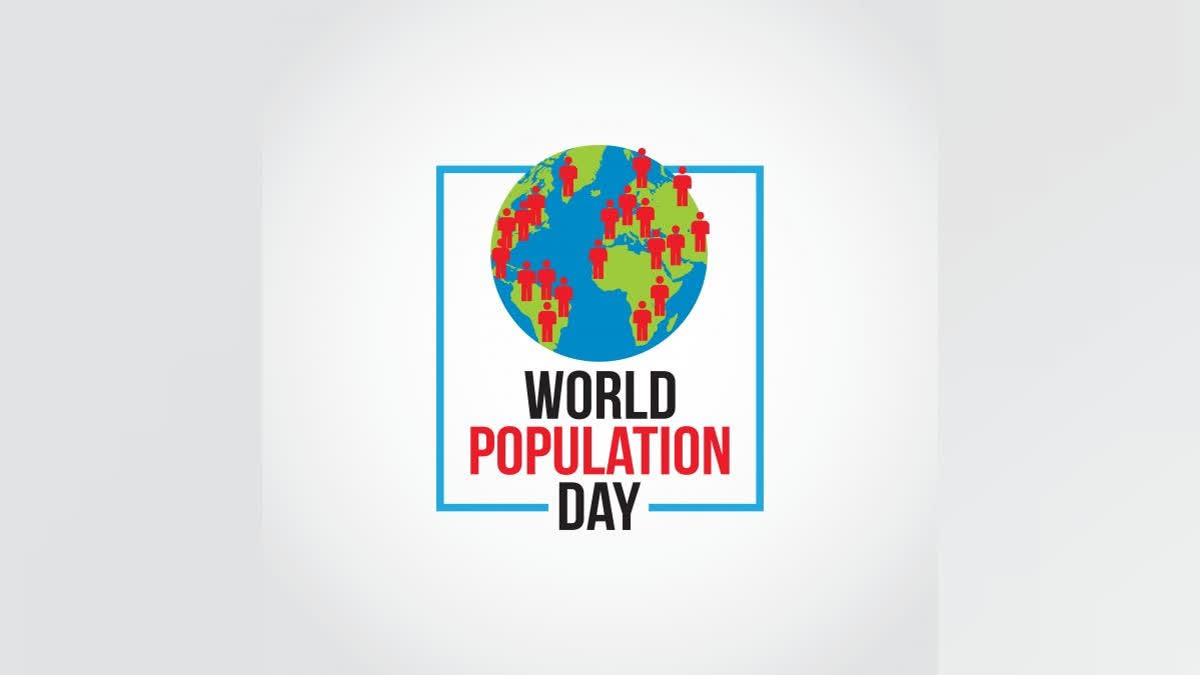Hyderabad: World Population Day is observed every year on July 11. It is a way to raise awareness of serious problems related to population growth. It is in an effort to raise awareness of the urgent need to address population-related concerns.
History of World Population Day:
World Population Day was established by the United Nations in 1989. This special day was created in response to the significance of the world population surpassing five billion people in July 1987. Dr. K.C. Zachariah suggested a celebration of this day.
World's Population:
The world's population has increased by over three times since the middle of the 20th century. According to the UN, there were eight billion people on the planet as of mid-November 2022, up from 2.5 billion in 1950. This number has increased by one billion since 2010 and two billion since 1998. Within the next 30 years, there will be two billion people on the planet. The population is predicted to peak at 10.4 billion in the middle of the 2080s, having reached 9.7 billion in 2050. China and India are the two most populous countries in the world, with respective populations of over one billion and around 18 per cent of the global population.
Positive & Negative Effects of Population Growth on Economic Development:
Positive Effect:
- Rising interest in entrepreneurship
- Increased richness and diversity of culture
- Strengthening social security systems with a younger labour force
- Higher demand leads to production economies of scale
- Urbanisation-driven infrastructure development, increased political power
- Greater chance of specialisation and labour division
- Rapid invention and idea spread
- A bigger talent pool.
Negative Effect:
- Increased pressure on infrastructure and housing
- possibility of a rise in crime and instability in society
- A higher probability of disease spreading
- Potential shortages of food and water
- A spike in pollution and waste generation
- Challenges to managing urbanisation and maintaining sufficient public services
- A potential increase in the gap of incomes
- The obstacle of achieving universal education
- An increase in demand for energy resources, which fuels global warming
Population in India:
The United Nations Population Fund's (UNFPA) State of World Population - 2024 report, titled 'Interwoven Lives, Threads of Hope: Ending Inequalities in Sexual and Reproductive Health and Rights,' unveiled that India's population is projected to double in 77 years. India holds the top spot globally with an estimated population of 144.17 crore, closely followed by China at 142.5 crore, as per the report.
India's population was recorded at 1.21 billion during the last census conducted in 2011. The report also provided further details, indicating that approximately 24 per cent of India's population falls within the 0-14 age group, while 17 per cent is between the ages of 10 and 19. The segment aged 10-24 is estimated to constitute 26 per cent of the population, with the 15-64 age group representing 68 per cent. Additionally, 7 per cent of India's population is 65 years and older, with men expected to live to 71 years and women to 74 years.
Overpopulation in India:
India is the most populated country in the world, home to over 1.3 billion people. It overtakes China to claim the title of the world's most populous nation. But with the country's population growing at an unsustainable rate, India faces a serious overpopulation problem. Population projections suggest that India's population may exceed 1.5 billion by 2030 and two billion by 2050, resulting in a substantial demand on the country's resources and a worsening of social instability, poverty, and environmental degradation. Although the government has taken some steps to address this problem, it is obvious that far more extensive action is needed.
Overpopulation Solutions:
- Increase in marriage age
- Balanced ratio
- Improvement in public health services
- Appropriate industrialisation, proper land use, and the need for education
- Proper public policies
- Modern family planning
- Empowering women
- Increasing knowledge



